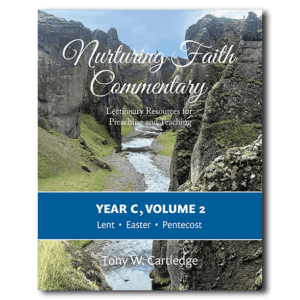
I have resonated with the Earth and its creatures since long before the first Earth Day was celebrated 53 years ago. In fact, I was an “ecologist” before I knew the word.
As a small boy, I wandered around the undeveloped fields bordering our subdivision in Louisville, Kentucky, dipping up tadpoles, chasing dragonflies and watching the bats come out at dusk. I knew it was all connected, even the mosquitoes.
Some Christians are anxious about celebrating the Earth, fearing that it shifts our reverence from the Creator to the creation itself. But precisely as a Christian, I hold two very simple convictions concerning our relationship to the Earth.
First, if we love God, then we will love what God has made. As the Bible says, “In the beginning God created the heavens and the earth” (Genesis 1:1). And second, if we love God, then we will love what God loves.
The creation account found in Genesis 1:1 – 2:3 expresses God’s delight at each stage of the creative process, and concludes, “God saw everything that he had made, and indeed, it was very good” (Genesis 1:31, NKJV).
How dare we proclaim our love for God if we do not cherish, protect, nurture and enjoy this earth and the whole array of living things with which we share it!
Let me share with you an experience that focused these convictions in a striking way for me.
From 1978 to present, I have had the privilege of living, teaching and pastoring in bilingual settings (Spanish-English), beginning with my invitation to serve the Portola Baptist Church / Iglesia Bautista Portola in the city of San Francisco, while I was a graduate student across the bay in Berkeley.
These dear people taught me many lessons about life, love and faith, including the delight that they take in the joys of this life – romantic love, family, table fellowship and beautiful surroundings – at the same time that they look forward with assurance to the life everlasting.
The largest part of this congregation traced their heritage to two small countries in Central America, El Salvador and Nicaragua. They loved the natural heritage – the particular flowers and fruits and fish and fowl – of their respective countries.
And yet, the majority of them were in the United States because of the grinding poverty and continuous warfare that made their lives untenable in their beloved homelands.
I had trouble reconciling the passionate but loving people I came to know in San Francisco with the tales of atrocities back home that they brought with them. Then I made the first of several trips I have made to Central and South America, to teach a course at the Instituto Bautista Teológico de El Salvador in Santa Ana, El Salvador.
I will never forget the panorama I saw from the window of the plane when we curled over the land on our descent to the airport at San Salvador (we had been flying over water).
I had read about the tropical forests of Central America, a teeming winter refuge for many of the migratory birds that breed in the United States. But what I saw below me were barren hills covered with scrub brush and crisscrossed with gullies.
The land looked like a dog with mange. How could this be? Over time, I learned the story.
As the Central American elites and their North American partners filled fertile lowlands with cash crops for export, subsistence farmers were forced up the hillsides, where they felled the forests for new plots which quickly eroded, forcing them to move up ever higher.
When the land gave out, the rural poor either flooded into overcrowded cities, exacerbating the competition for jobs, joined rural guerilla movements, or left behind home and family to ride the freight cars toward el Norte.
This dynamic persists to this day. What tragic irony that increasing economic anxiety and suspicion of “the other” in the United States is currently producing virulent anti-immigrant sentiment.
On this tiny blue jewel called Earth, everyone is connected intimately to everyone else.
We drank the local coffee; it was strong and fragrant. More and more coffee was being produced from sun-tolerant varieties that produce larger yields, and larger profits, but require that the forest be stripped away to make way for the coffee trees.
The traditional varieties had grown on small trees in the shade of the forest canopy; we saw some of these “old-fashioned” trees as we hiked on the slopes of the volcano Izalco.
Ideological and religious differences notwithstanding, many if not most of the conflicts which stain our nations and peoples with blood are conflicts over resources. From the richest and most privileged among us to the poorest and most obviously desperate, we cannot live without the Earth’s bounty.
And the Earth will not produce her bounty if we do not love her and if we do not love and cherish the whole array of living creatures with which we share her – love them for their own sake as well as for their utility to us, love the Earth and all of God’s creatures because God loves them.
And in the long run, if not tomorrow or the day after, we will all share the bounty or reap drought, flood, famine and death together.
Editor’s note: This article is part of a series this week for Earth Day (April 22). The previous articles in the series are:
What Can We Do With a Global Population of Eight Billion? | Don Gordon
Urging Big Business to ‘Invest In Our Planet’ | Martin J. Hodson





